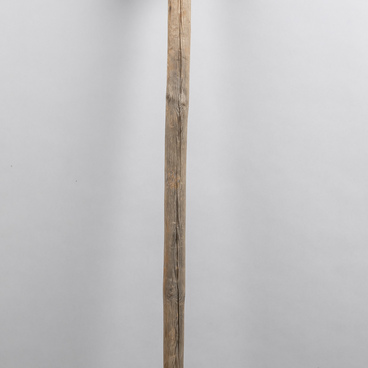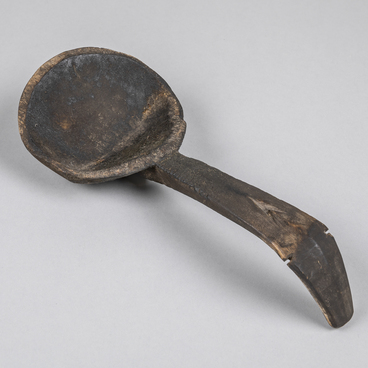This tool is used for one of the stages of nettle processing — heckling. In the early 20th century, Khanty covered themselves with blankets made of nettle, fished with nets made of nettle, and used nettle ropes. Ropes and cables were made from non-spun fibers.
First, the nettle fibers were soaked for a day in a decoction of larch bark to make them stronger. Then they were divided into two parts, one of which was painted black with a decoction of crustose lichen. Ropes twisted from these two fibers of different colors have a unique and striking pattern.
When building a new hut, nettle waste was used as caulking material for laying between logs and sealing cracks.
Nettle fibers were used for creating nets and ropes of different diameters and lengths for household and craft supplies. Such nets and ropes were very strong and often used in fishing and hunting.
Women made mats from nettle fibers.
Khanty women began weaving canvases from nettle fibers at least two centuries ago. This was once a very popular craft. However, in the early 19th century factory-based cotton production began to develop in Russia, and the prices for cotton dropped dramatically. At that point it was easier for the indigenous population to exchange traditional handicraft items for ready-made pieces of cotton fabric than to weave nettle canvases. After all, this was a very labor-intensive process. And so, the technology of making nettle canvases became completely forgotten.
Looms on which the Khanty and Mansi weaved nettle canvases before the turn of the 19th century were little different from other looms of that time. The reason why the process of producing such a fabric is unique lies in the primary processing of raw material for making tow. The age-old technology of producing nettle fibers consisted of the following stages: collection of raw materials, drying, soaking, breaking, scutching, rubbing, heckling, and spinning.
Today, the technology of nettle production has been restored, but only in the form of research activities conducted by museums.





